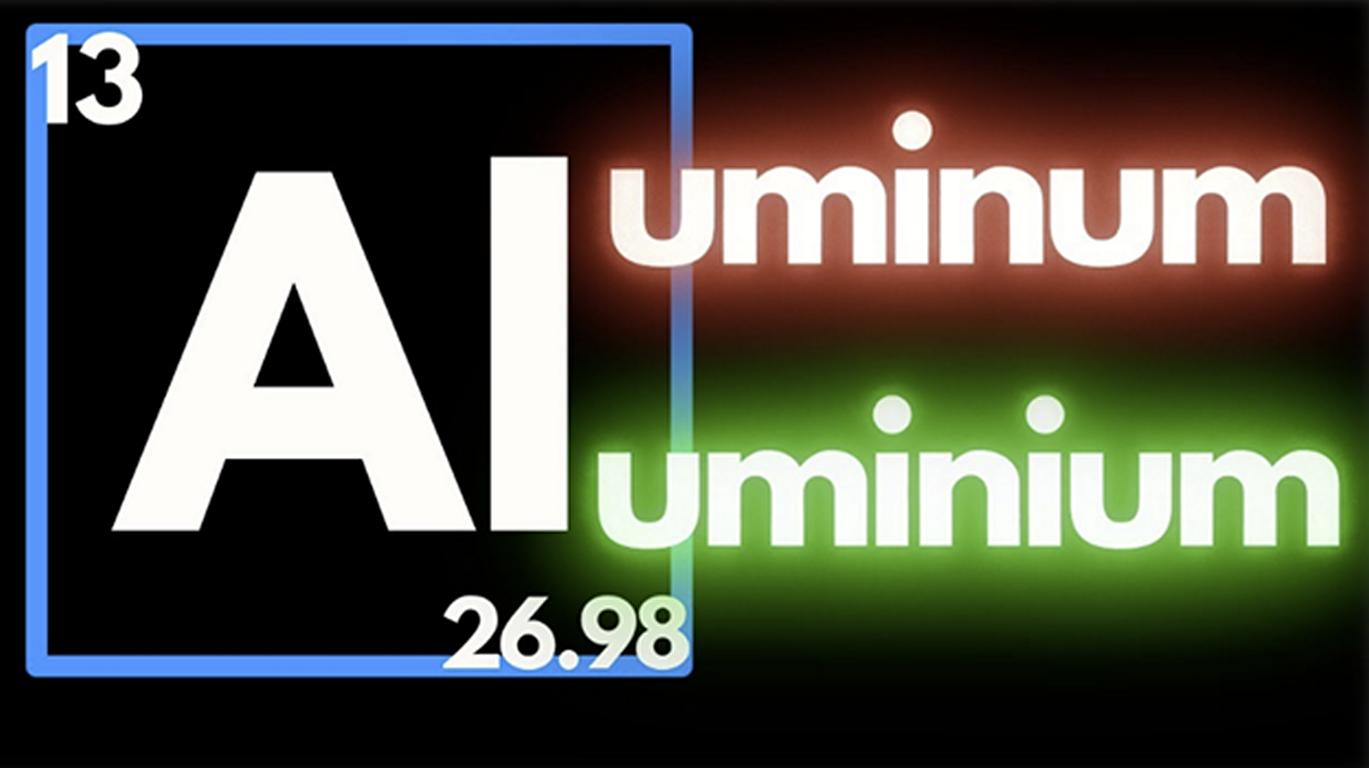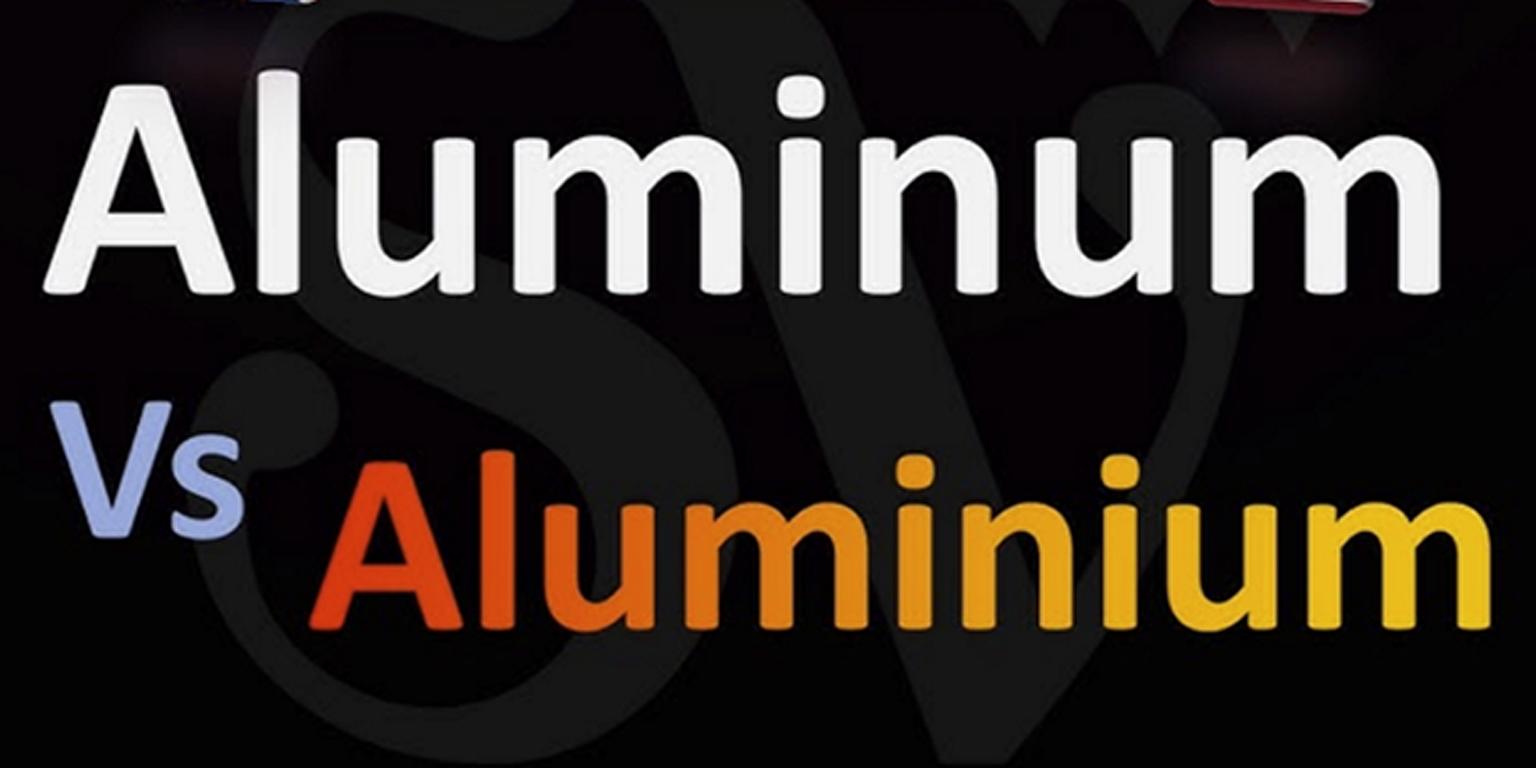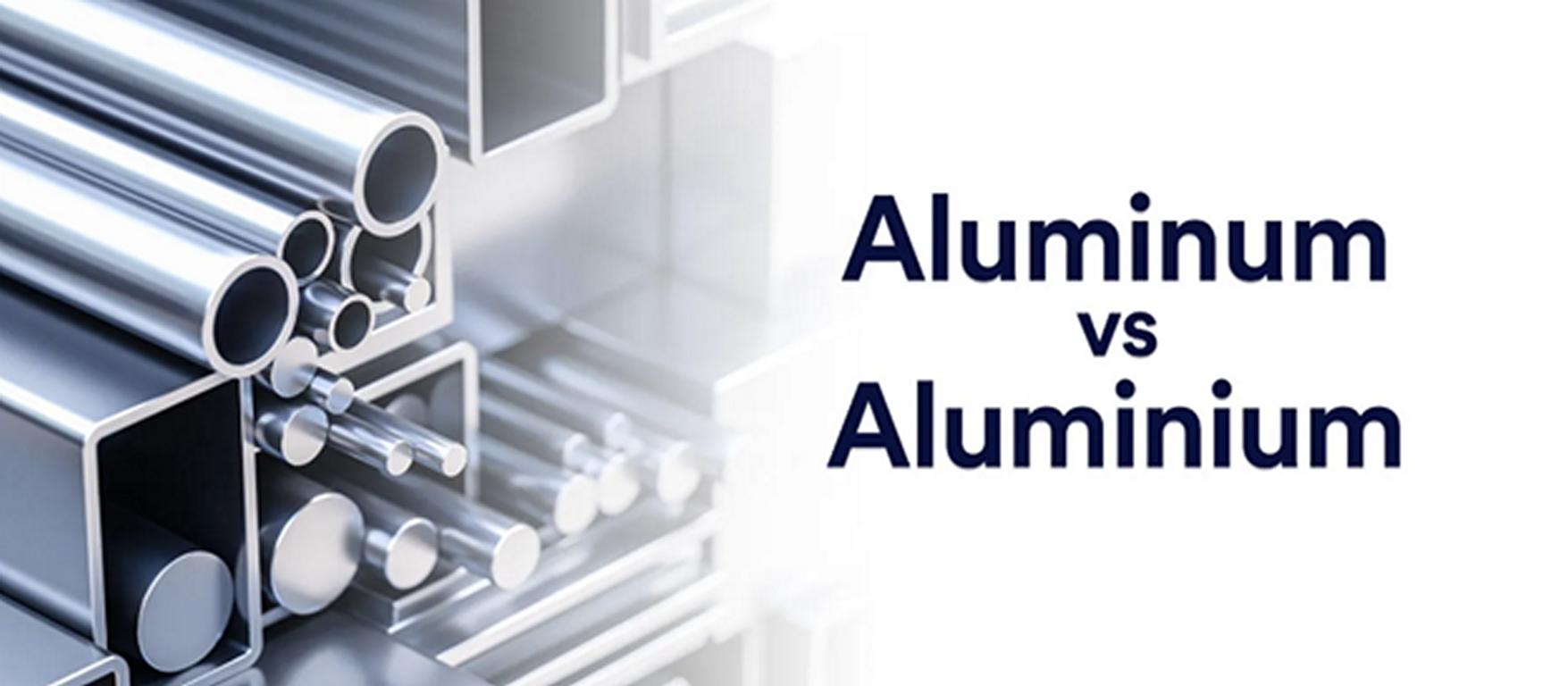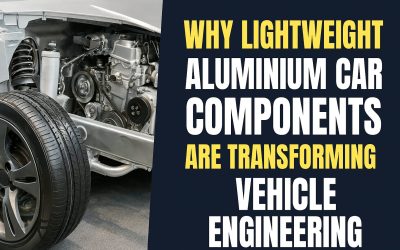Why Aluminum or Aluminium Spell Differently? Which Is Correct?
Aluminum or Aluminium? This blog discusses both spellings. Learn why they differ. Find out terms as atomic number 13. Learn how it is used in automobiles and aircraft. Know the history from 1825. It is easy to distinguish these differences from this blog.
What is the History of Aluminum and Aluminium?
Aluminum or Aluminium is a metal. It was established in the year 1825. The symbol is Al. This metal is light. The element has an atomic number of 13. They obtain it from Bauxite ore; the ore contains between 30-60% Al₂O₃. It is made cheaper through electrolysis by the people.
Its melting point is 660.3°C. That’s hot! It is applied in automobiles and aircrafts. It is also good for recycling. Recycling can only require 5% energy. This metal is tough and has a long life expectancy. Aluminum alloys are very economical.
Who First Used Each Term and When?
Sir Humphry Davy
The term was first used by Davy in 1808. He came across it while conducting an experiment. This has occurred with wires, batteries, and glass components. The discovery was an electrical process.
They pointed out specific technical characteristics, for example, melting points and reactions. That led to the name aluminum or aluminium. Numbers like 13 and 26 were important. This event is remembered for its creativity.
British Usage
The term was used later in Britain. They preferred aluminium by 1812. This was evident in technical books. It had different spellings. The British concentrated on density and heat properties.
That was useful in industrial applications. Numbers like 13 were important. They incorporated it in planes, engines and wheels. This choice had impact on other regions.
American Usage
In America, aluminum became common after the year 1827. They enjoyed it for its non-oily consistency. This was perfect for transportation. The engineers then subjected it to heat and strength tests.
It displayed some figures like 660. That made it useful. They used aluminum in automobiles, airplane, and constructions. This preference spread fast. The term became standard.
Early Literature
Early books used either aluminum or aluminium. They were first used in the 1830s. This literature contained technical information. It contained melting points and electrical characteristics.
That information helped scientists. They concentrated on improving flows. They had numbers such as 13 and 660. This knowledge was disseminated far and wide. It shaped future research.
How Did the Spelling Variations Develop Over Time?
Scientific Community
In 1800, people discussed Aluminum or Aluminium. Sir Davy went further to say Alumium. This prompted some to express their opinions. In 1812, America selected Aluminum. They approved.
Each name had its fans, European scientists said Aluminium. Substances such as aluminum oxide or aluminum chloride were referred to by these names. Changes affected papers. Reports had different terms. That made reading hard. It was rather challenging for labs. This showed word changes.
Language Evolution
The material Aluminum or Aluminium underwent a renaming process. In the 19th century, such words as extrusion and alloy underwent a shift in terms. That was cool! Countries changed spelling rules. They needed uniform words. Al’s names became diverse. This made new words.
Changes included smelting. This word had multiple spellings and could be found in reports and books. It showed language growth. That was great for schools. This was amazing!
Dictionaries
In dictionaries, there were variations such as Aluminum or Aluminium, which was useful in educating children. This made it fun. Aluminum was in American books. British ones contained the word Aluminium. They demonstrated how to say it.
Al₂O₃ and Al₄C₃ were inside words. They assisted in making words equal. It guided readers. This was good. Dictionaries helped kids read. That was important. It was nice for everybody.
Industrial Adoption
Factories selected names for Aluminum or Aluminium. This was imperative. They sourced parts with ‘Aluminum’ in the U. S. They liked it. Europe used Aluminium. It was cool.
These names were used in methods such as aluminum die casting and forging. It was necessary for trade. ASTM and ISO are some of the standards that wrote them. They made it easy. This helped factories. It was good for everybody. That made things clear.
|
Aspect |
Aluminum |
Aluminium |
Key Dates |
Usage Regions |
Related Terms |
|
Origin |
Sir Davy, 1812 |
European scientists |
1800s |
USA |
Al₂O₃, Al₄C₃ |
|
Adoption |
America, 1812 |
Europe |
19th century |
Europe |
ASTM, ISO standards |
|
Industrial Use |
Casting, forging |
Casting, forging |
20th century |
USA, factories |
ASTM, ISO |
|
Dictionaries |
American books |
British books |
19th century |
Schools, education |
Educational guidance |
|
Spelling Variations |
Uniformity sought |
Diverse terms |
1800-1900 |
Global |
Multiple spellings |
|
Impact on Labs |
Reading challenges |
Reading challenges |
19th century |
Laboratories |
Reports, papers |
|
Language Evolution |
Term shifts |
Word changes |
19th century |
Global |
Language growth |
Table on the Spelling Variations Develop Over Time!
What Are the Regional Differences in Usage?
British English
In Britain, Aluminum or Aluminium is used. This word has more letters than Aluminum. British scientists in the 1800s chose this spelling. It has five syllables. People in the UK prefer it. The atomic number is 13.
Many cars use Al to make them light. This helps save fuel. Al can be made into thin foil. It is also in cans. They recycle it to save energy. This metal has good conductivity, around 37.7-42.4 μΩ·cm. It is also used in airplanes. British engineers love Al for building. It’s very useful and strong.
American English
Americans use Aluminum or Aluminium. This word is shorter. It has four syllables. This spelling was adopted in the 19th century. The atomic number for Al is 13. Many American cars use it for panels. It helps make them lighter. Al is used in soda cans. They recycle cans to save money.
This metal has a thermal conductivity of 205 W/m·K. It is also found in airplanes. American engineers like Al for construction. It’s strong and light. They use it in many products. This makes it very popular.
International Standards
Globally, Aluminum or Aluminium are both used. The choice depends on the region. The atomic number of Al is 13. This metal is light and strong. Many countries use it in transportation. It helps save fuel.
This metal can be recycled. It is good for the environment. Engineers prefer it for its conductivity, around 37.7-42.4 μΩ·cm. It’s used in wiring and electronics. They use Al in construction. This metal is also found in packaging. It is very versatile. Both spellings are accepted.
Academic Papers
Academics use Aluminum or Aluminium. This depends on the country. The atomic number for Al is 13. Research shows it is lightweight, density 2.70 g/cm³. It is strong and durable. This metal is in many studies. They examine its properties. Al is used in various experiments. It is found in electrical wiring.
Scientists study its conductivity, 205 W/m·K. This metal is important in research. It is also used in transportation. Researchers like it for its recyclability. They publish many papers on Al. It is a key material.
Which Spelling is Preferred in Technical and Industrial Contexts?
Industry Standards
That is because standards use aluminum or aluminium depending on where it has to be used. ASTM enjoys aluminium. It is a good material as it is strong yet very light. JIS frequently uses the term aluminium. Both are used in planes. This includes wings and bodies.
ASME talks about strength. It also mentions rust. Both conduct electricity well. ISO 6361 covers sheets. Its standards ensure quality. The 2024 alloy is used where strength is required. Standards assist us in cooperation. They stop mistakes. Rules are made in industries for ensuring safety.
ISO Norms
ISO 209 uses the terms aluminum or aluminium. It relates to chemicals. This ensures purity. Strength is also considered by ISO. It measures yield. Standards cover making tubes.
This includes pipes. ISO checks surface quality. The 6061 alloy is flexible. Its rules make things constant. ISO helps countries trade. They ensure that things fit. It makes production easier. Standards save time.
Research Papers
Papers use aluminum or aluminium. They discuss 7075 alloy. It is strong. Scholars focus on how it curves. Some papers mention ASTM and ISO requirements. They check hardness.
Research looks at how heat behaves. Papers talk about airplanes. They select materials for planes. Rust is studied too. They compare how it is made. Research helps us learn. It aids in the creation of new things.
Manufacturer Preferences
Manufacturers use either aluminum or aluminium depending on the market they target. American firms say aluminum. They produce auto components. It’s light. European firms say aluminium. They build structures. This includes windows. Both words are in papers. This makes it clear.
Manufacturers adhere to ASTM or ISO guidelines. The 5083 alloy is used in boats. It fights saltwater. With the help of manufacturer rules, good stuff is provided. They ensure that things run smoothly. Standards are used in making things.
Are There Any Legal or Regulatory Implications?
Patent Documentation
Aluminum or aluminium appears in patent documents. They include words such as Al and ASTM. It comes out in designs 5052-H32 and 6061-T6. This includes items such as bolts, nuts, washers, screws, and rivets. The process requires the additional processes of annealing, extruding, and milling.
This helps to bring strength and durability. There are important factors involved in the extrusion process such as a die, speed, and temperature. It forms sheets and bars.
They test for tensile strength and hardness. Alloys are different with 2xxx and 7xxx series. The standards are derived from trade laws such as ASTM and ISO. Each part has its own codes such as AMS to ensure safety.
Trade Regulations
Trade rules relate to aluminum or aluminium. This includes HTS codes and tariffs. It is evident in the forms, ingots and coils. They employ numbers such as 7601.10 and 7606.12.
Export rules require checking of quality standards such as ISO and ASTM. The alloy grades, for instance, 3003 and 5086, differ. Trade discussions involve NAFTA and WTO regulations.
Every import follows regulations. Heat numbers and lot numbers are depicted on labels. Its products include foil, plates and extrusions. This requires certificates of origin. They control both price and quality. All such steps are legal.
Export/Import Rules
Transporting aluminum or aluminium has conditions in it. They ensure safety. The LME sets prices. It helps manage cost. Export documents also specify types of alloy such as 1100 and 6063. Customs requires HS codes such as 76.04 and 76.08. This checks duties and tariffs.
Inspection, quality and compliance testing are part of the import rules. They consider factors such as tensile strength and elongation among other specifications. Alloys conform to norms like ISO 6361.
Test reports are provided in every shipment. Rules are influenced by trade agreements such as USMCA. These are tubes, rods and sheets.
Compliance Documents
Laws control the use of aluminum or aluminium. They require documents such as MSDS and RoHS. It also involves alloy standards such as 1050 and 7075. They include properties like electrical conductivity and density among others. It encompasses items like bars, billets, and extrusions.
The tests include corrosion tests and heat treatment tests. Every part requires certification such as ISO 9001 and ASTM B209. These include safety and quality. They are chemical analysis and mechanical properties. Records are always important when it comes to compliance with the law. This helps in protecting the materials for use.
How Do Spelling Variations Affect Communication in Global Markets?
Technical Documentation
Spelling can change. Aluminum or Aluminium look different. There is a need to use both. It is beneficial for parts such as 7075 alloys and T6 temper. They avoid confusion in CNC machining and anodizing. So the right words assist in the ASTM and ISO rules. That makes 3D printing easier.
Be sure to look for these terms whenever you edit your written work. It ensures that everybody is informed of the material. It is beneficial to use both spellings because then documents are understandable for everybody.
International Collaboration
Spelling is key. Aluminum or Aluminium are two ways. That can cause confusion. They impact orders of 6061 extrusions and AA1050 sheets. They ensure that the FEA and CFD simulations are correct.
It also assists with QA steps and ASME rules that are necessary for them. In meetings, words matter. This avoids project mix-ups. Look for these terms in your papers. It ensures that everyone is on the same page. Well chosen words improve working relations in groups and teams.
Cross-Border Trade
Spelling matters a lot. Aluminum or Aluminium can be tricky. This is important when purchasing 2024 plates or 3003 coils. They assist with HS codes and tariffs. It assists in trade negotiations and in the customs. In that way, the shipments are faster. Search your orders for these words.
It keeps suppliers happy. Appropriate words facilitate trade. It contributes to effective communication when both words are used.
Marketing Materials
Spelling is important. Aluminum or Aluminium should be correct. That helps with ads. This applies to 5052 foils and 5083 sheets. They ensure that spec sheets are correct.
The right term assists in SEO and reaching people. In catalogs, clarity counts. It also aids in social media. Look for these terms in your ads. It makes your brand robust. By incorporating both words you gain the trust of customers.
Conclusion
Aluminum or Aluminium has varied uses. Both terms are correct. Engineers and scientists employ them in different ways. It is used in cars, planes, and cans. For more information on metals, visit ALUDIECASTING. Read now for more facts!!!








0 Comments